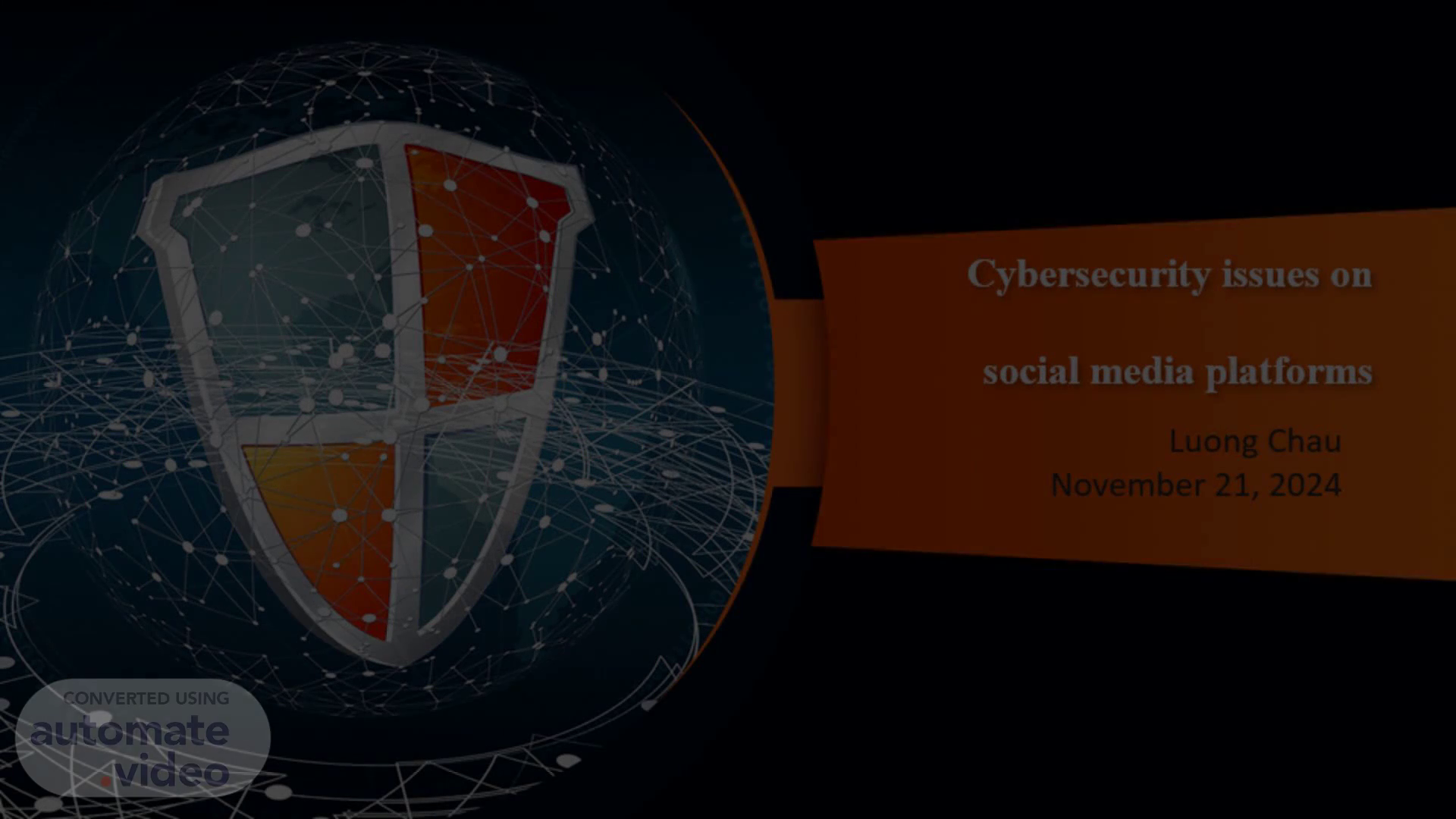Scene 1 (0s)
[Audio] Good afternoon, everyone. My name is Lucas. My presentation today focuses on a critical issue in our digital world: cyberbullying and its impact on mental health. Cyberbullying is not just a modern form of harassment; it has unique characteristics that make it particularly harmful, especially for adolescents. Over the next few minutes, I'll discuss what is Privacy and Security in Online Social Networks, also cyberbullying and how it affects mental health, and what can be done to address it. Let's begin by defining cyberbullying..
Scene 2 (34s)
Table of Contents. HealthPrivacy and Security in Online Social Networks Cyberbullying and Its Impact on Mental Effective interventions.
Scene 3 (46s)
Privacy and Security in Online Social Networks. Introduction.
Scene 4 (1m 2s)
Types of Privacy Threats. Classic Threats: Phishing, malware, spam. Modern Threats: Clickjacking, fake profiles, user profiling. Monetization of user data for advertising..
Scene 5 (1m 16s)
What is Cyberbullying?. Cyberbullying involves using digital platforms to harass or harm others intentionally. Forms: Malicious messages, sharing humiliating images, online exclusion..
Scene 6 (1m 31s)
Prevalence of Cyberbullying. Prevalence rates: 6.5% to 35.4% depending on the population studied.
Scene 7 (1m 52s)
Psychological Impacts. Victims: Depression, anxiety, suicidal ideation. Low self-esteem and emotional distress. Perpetrators: Behavioral problems, social difficulties. Cyberbully-victims: Most severe impacts.
Scene 8 (2m 8s)
Mental Health Consequences. Suicide risk: 3% of Australian youth experienced suicidal thoughts after cyberbullying (Foody, 2015) Physical symptoms: Sleep disturbances, headaches (Bottino, 2015) Long-term effects: Difficulty forming healthy relationships(Bottino, 2015).
Scene 9 (2m 27s)
How to Protect Yourself. Use strong, unique passwords and change them regularly. Customize privacy settings. Avoid third-party apps and install antivirus software. Limit personal information shared online..
Scene 10 (2m 41s)
Conclusion. OSNs offer connectivity but pose serious risks. Informed behavior and stronger platform policies are essential. Cyberbullying is a serious issue affecting a significant portion of adolescents. The psychological impacts are profound, leading to depression, anxiety, and suicidal thoughts. Preventive measures and early interventions are crucial. We all have a role in addressing this issue—whether as parents, educators, or peers..
